So you got your pencils sharpened and paper ready, now what? The desire to make some art is the main tool you will ever need in your art practice, but the main challenge right now is figuring out where to begin, what supplies to get and basically how to make sure you actually gonna enjoy making art. This is probably the most popular question I get from people who both would like to try drawing just for fun in their spare time and improve their skills by taking doodling to the next level. At the same time this is the most complicated question for me to answer because I first ask about that person’s particular interests in art and medium preferences to suggest a plan for action. But in this post I want to discuss the most popular ways to start making art.
Basic Art Supplies

You most definitely don’t need any expensive art supplies to start, any pencils and pens you already have will do. However, sometimes you might feel like you need an extra touch of excitement and something new to play with to inspire new ideas. Therefore, I want to suggest just a few interesting and inexpensive supplies you can experiment with to spark your creativity:
These pencils look and work just like the regular color pencils, but their main advantage is how easy they can be erased if you don’t press on a paper too hard. They are vibrant and richly pigmented, but not as waxy as other pencils. I constantly use these pencils for sketching and especially for the undersketch because I can easily ink over them or watercolor, you can pick a pencil that’s closer to your final color palette so that it blends in well or simply erase any visible marks after the artwork is complete.
This graphite pencil is just like your usual graphite pencil, but with an ability to be diluted with water and used as a watercolor pencil. This could be a great introduction to watercolor if you never tried it before, but also just a fun way to experiment with a new technique. You can lightly glaze it across paper and then go over it with a wet brush to tone your paper or create a mid-tone value for the object you’re drawing.
If you would like to test the waters in watercolor without braking your bank and still getting satisfying results, I highly recommend this watercolor set. You get 12 main colors, that are vibrant, highly pigmented, blend well and create new colors without getting muddy. Some people see paint in tubes as a challenge to work with, but trust me once you try it you will never buy dry paint pans. Wet paint is much easier to work with, you only need to squees a small amount into a mixing palette or a regular white ceramic plate and lightly touch it with a wet brush to pick up the pigment. Once the paint dries, it can be easily reactivated with water the next day or even the next week. However, because this is not an artist grade paint, it is not fade-resistant and might fade if exposed to the direct sunlight for too long. But it’s a great value for a sketchbook practice.
Picking a sketchbook is a matter of personal preference, spiral binder, soft cover or hard cover, portrait or landscape, bright white or ivory paper, textured or smooth…. The decision is yours to make. I suggest starting with something in the middle like Canson Mixed Media sketchbook. It’s inexpensive, yet has a very nice paper quality, can take light washes of watercolor, gouache or sketch&wash pencil washes. It has nice bright smooth paper that makes it easy to work with pens or markers.
For sketchers and doodlers on the go:


I recommend getting a pencil pouch that fits your basic supplies and is small enough to fit in you purse or backpack. I found a make up pouch at Marshalls that has two pockets, which is enough, but mainly had transparent compartments so I can see what’s inside and not have to take everything out. Also, I will suggest getting a pocket size sketchbook like Moleskine Pocket Art Plus Sketchbook that has a hard cover which is a good feature for sketching on the go, and thick paper works well for light washes and markers too. Having an option to sketch on the go or take your art supplies with you on a trip encourages you to maintain consistent art practice which is just like in case with physical exercise promotes quick improvement.
Where to begin

Now that you are all set with your art supplies or at least have an idea of what you might start with, the main challenge is creating a plan for action. Even though we all drew as kids, somewhere along the way most of us developed a fear of failure or a fear of white page, hesitation, insecurity and it’s only natural to have all of these feeling. Therefore, my first advice is to lower your expectations. Always remember that just like in any profession it takes masters years and decades to really master their craft and draw with ease. And you will get there too. Even with no previous experience, you will start seeing your first results within the first few days of practice because the true way to learn how to draw or paint is only by actually drawing or painting. Don’t expect anything from your 30-minute drawing practice, just use that time to meditate, learn about your hand movement, observe the details of the subject that you are painting, and leave it at that. Next time, when you have a bit more confidence in your line work, you can set a goal, for example to learn how to draw a dog, and start taking small steps towards that goal by practicing and learning from your mistakes. I always suggest to not erase or throw away your drawing that you are not happy with, just put them away for now. Later, pick them up again and compare to your latest progress. Note what you got better at and what still needs some improvement, but mainly congratulate yourself on making even slightest progress and use this little burst of confidence as an encouragement to try even harder next time.
Living in the modern time of technology, you can find an enormous variety of drawing and painting tutorials online: Google, YouTube, SkillShare, Pinterest, etc., but for me there’s nothing better than sitting down with a book and getting inspired by flipping through the pages of drawings rather than looking at the screen. The variety of books for beginners is overwhelming, so I suggest narrowing down by subject matter( for example flowers or animals) or medium ( pencil or watercolor) etc. I recommend getting a book that is made as a sketchbook, that encourages you to draw right in it, that makes drawings more approachable, at least that’s what I think about such books/sketchbooks.

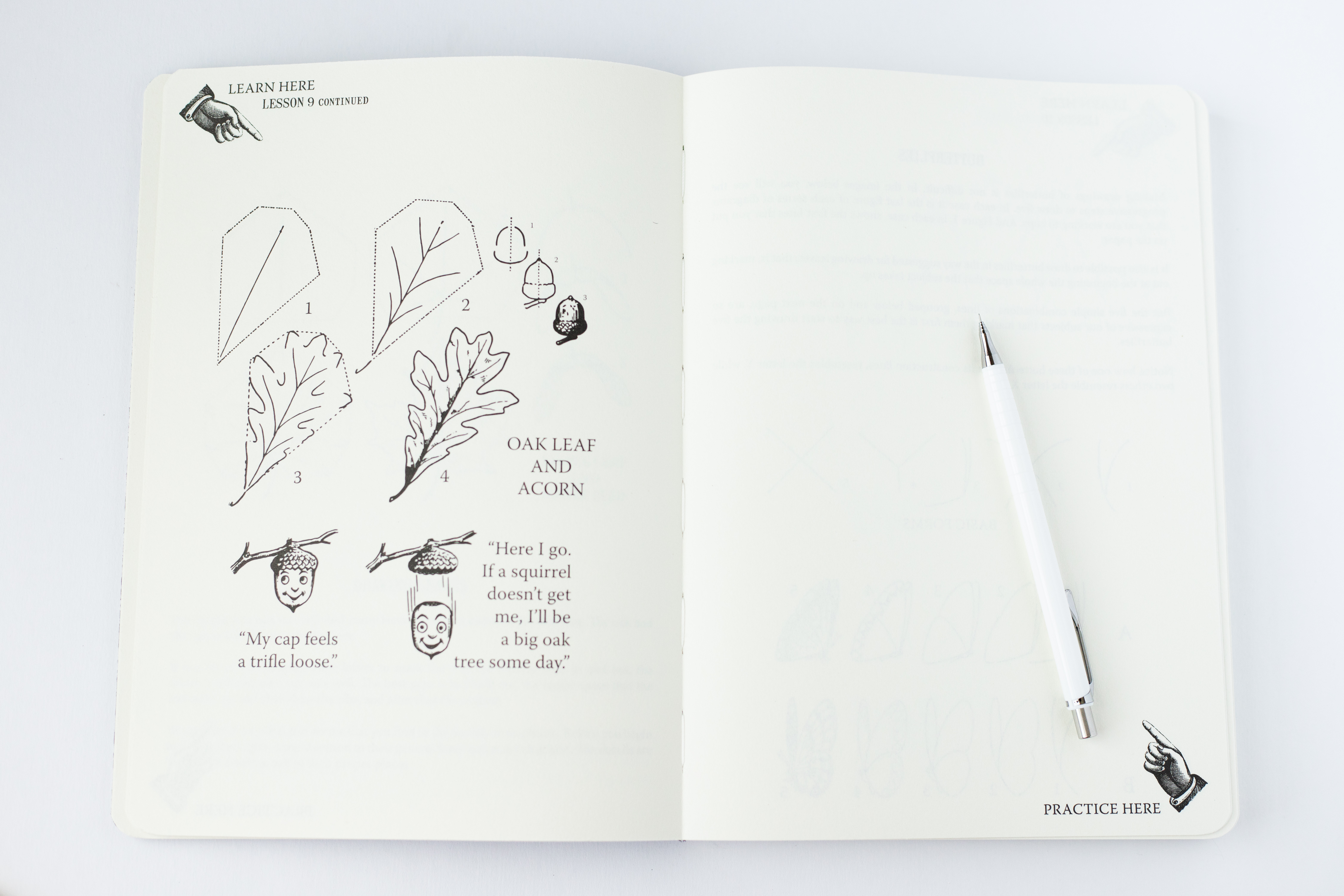
A good example of one of these sketchbooks is Piccadilly Sketching Made Easy.
A comprehensive drawing course that covers variety of subjects as well as basic fundamentals of drawing, such as line work, proportion, perspective, etc. The text instructions are kept to minimum, putting more emphasis on a visual training, which consists of training your eye to see shapes and break down complicated objects into simple geometric shapes to learn more about form and establish a habit of starting with an overall idea, rather than the details. It is important to learn to pay attention to the entire shape and correlation between forms and lines, rather than specific details that can distract you from achieving a cohesive look.

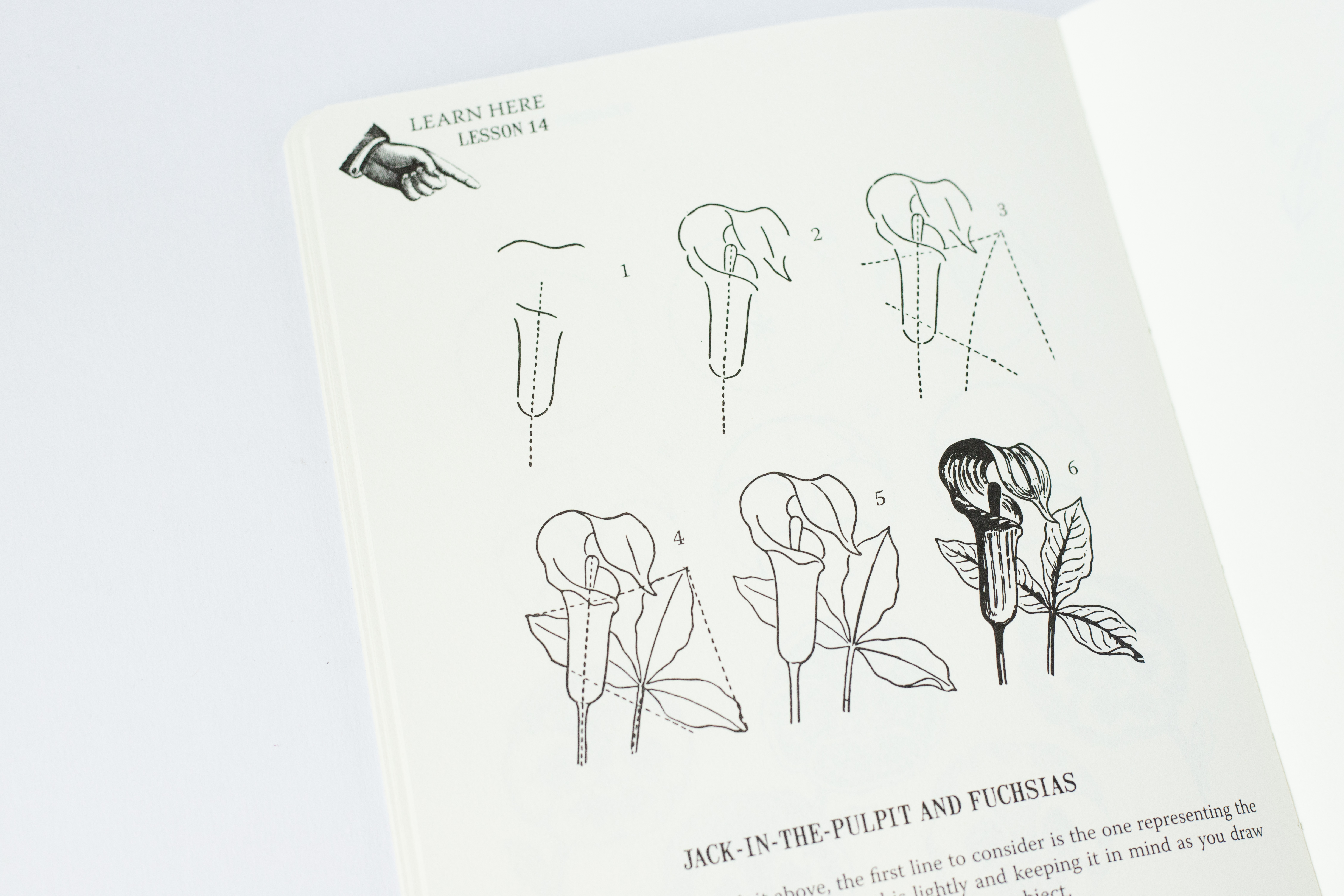
This sketchbook is meant for dry media drawings and sketching. If you would like to try sketching in watercolor, I recommend getting a watercolor coloring book which is just like a usual coloring book, but with a paper thick enough to take watercolor. Why coloring book idea? because trying watercolor can be hard if you had no previous experience with this media, but having a basic picture before your eyes gives you a good starting point that encourages to give it a try, eliminating the fear of blank page. A good example of such books is a series of Painterly Days Watercolor Coloring Books.
If you want some more insightful information on the use of watercolor I recommend giving these books a try:
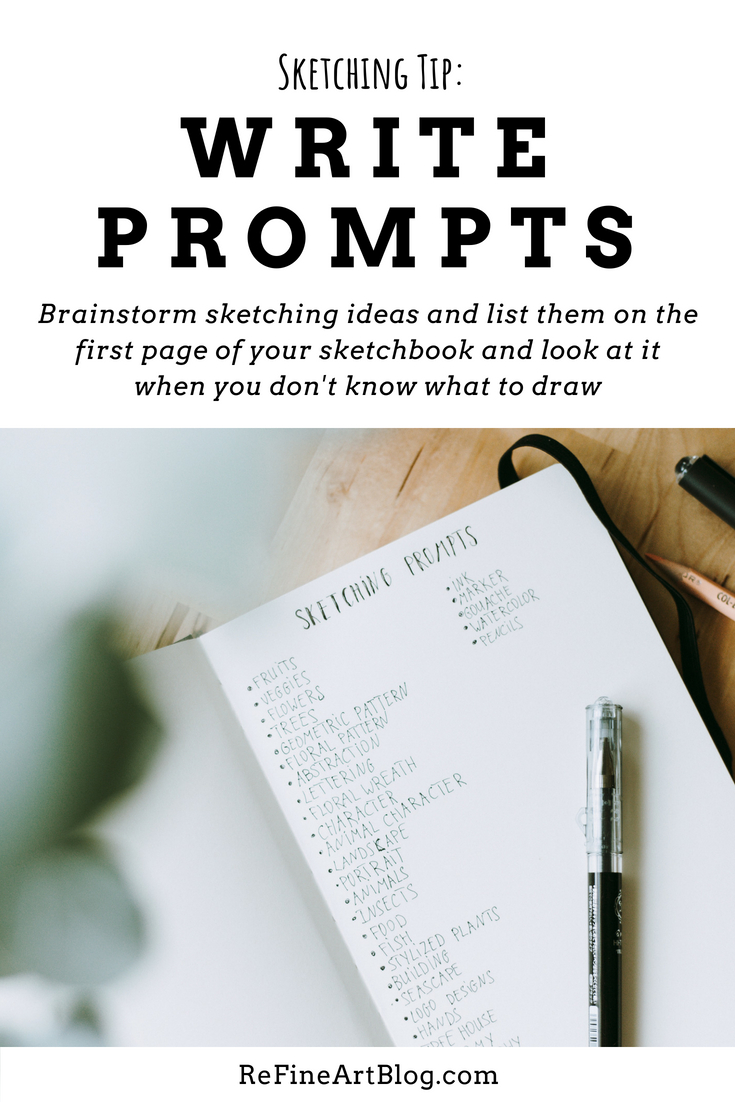
Learn by copying
There is nothing bad in copying someone else’s art as long as you’re doing it only for learning purposes and you won’t publish it online without giving a credit to an artist.
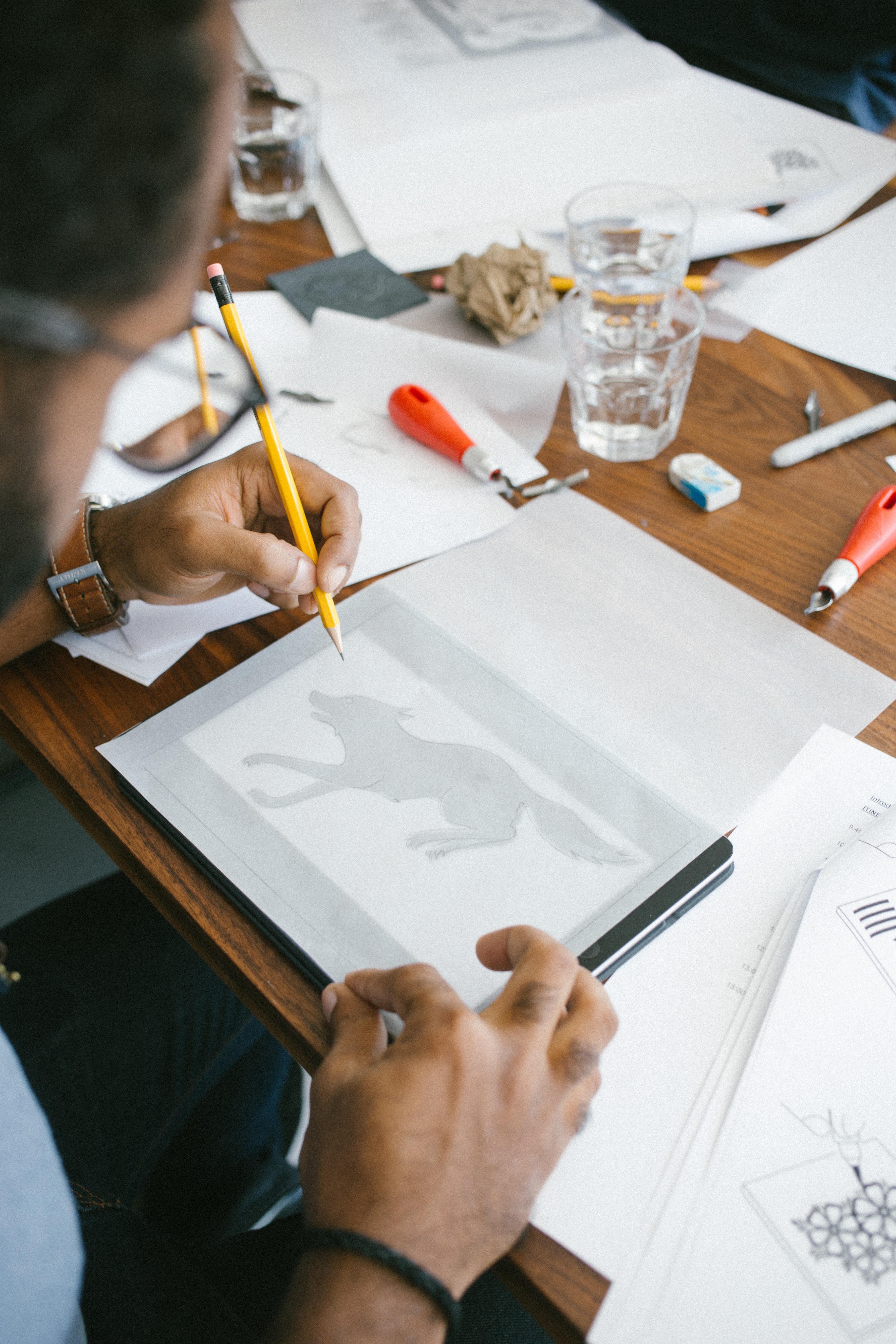
To copy, you can draw by tracing. I know a lot of artists have mixed feeling about tracing, but as long as you are not relying solely on tracing and also exploring other techniques, like in the drawing book mentioned above, you are fine. Tracing helps you train your hand for consistent line work and help you see shapes better. Start with something simple, like animals. We often assume we know what a certain animal looks like, but once we start drawing we realize how limited our visual knowledge is. How long is the neck? How big is the head? How far are the from legs from the back? All these question can become overwhelming. It helps to study by breaking down things into simple shapes. For that, you can grab a piece of transparent paper (tracing paper) and put it over the drawing you want to copy. Now locate the main features, like head, shoulders, etc., and trace their shapes, without putting too much details. Now move the tracing paper to the side and analyze it without looking at the original drawing. Do you see head as an oval or as a circle? Are the shoulders reminding a triangle or a square? What’s the distance between the head and the shoulders? and try to visually remember this. In the future, you will automatically start drawing a head by drawing an oval instead of starting with small features and that will ensure the right size and shape of the head, and so on. Learning to see the bigger picture beyond the details is the most important at this stage.
How to stay consistent
Once you made your first steps, you need to establish a routine that will help you to stay on track with your progress and ensure an improvement of your skill. As I mentioned in the beginning, just like in a physical sport, you need to practice on a daily basis to see your skills improving, the same philosophy applies to art practice. Don’t set any crazy goals in the beginning of your art journey because as people say “life happens” and you will have to prioritize other things, or you won’t be in a mood for drawing some days, and if you set tight deadline for your progress, being unable to meet these milestones might discourage you from continuing. Therefore, treat your art practice simply as exercise. Set aside 30 minutes a day, or as much time as you can, and approach this as a daily practice for your hands, eyes and your mind. Use this time to relax and enjoy the process rather than chase goals.
One of my most favorite quote about art practice is by Sarah Simblet from her book “Botany for the Artist”:
Drawing is about so much more than just making pictures that sometimes the finished image is irrelevant. It can be thrown away without losing what was experienced and learned.
Remember that quote because it changes the entire approach to making art. We are always expected to deliver a final product even if no one is asking us to do so, forgetting to enjoy what we do!

Another way to stay consistent is to have your supplies accessible. Take your pencil pouch on a trip, keep a small sketchbook in your pocket to sketch in a waiting room while waiting for you appointment, etc. Keep your supplies to a minimum and rather focus on improvement of your techniques. Don’t overwhelm yourself with choices, keep it simple. Your drawing doesn’t have to be a finished product, it can be a small sketch of a mushroom, as long as you stay on track with your routine and listen to what feels right to you.
Here’s a great book about sketching by Sarah Simblet, whom I quoted before. She explores different subject matters and mediums, tries different techniques and shows a lot of works by other artists to give you more ideas for sketching:
Thank you for reading this post, I hope you find it useful and inspiring. Feel free to reach out with any questions, I am more than happy to help out anybody with a more individual advice. If you have any tips for taking a first step in drawing or painting or something you when you did when you were just starting out, share it in the comment and I would love to read that!!!
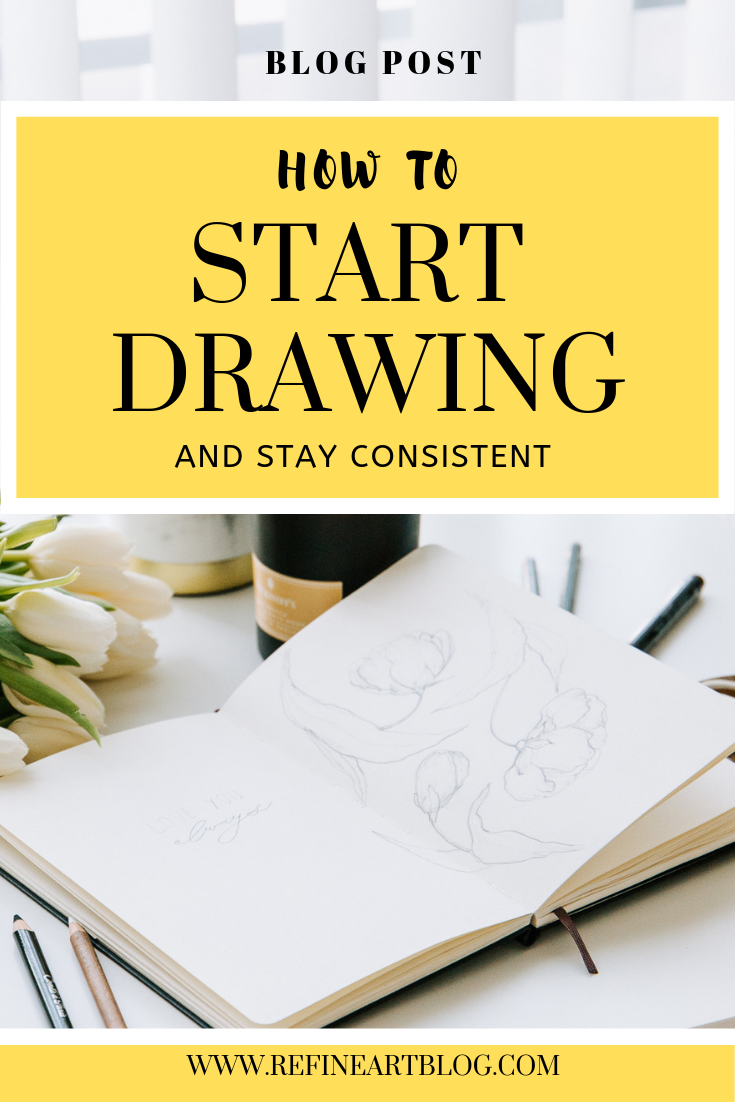
p.s. If you shop at Blick Art Materials, please you my affiliate link.
I use affiliate links and earn a small commission at no additional cost to you, this helps me keep this blog running and share free information with the world! 🙂
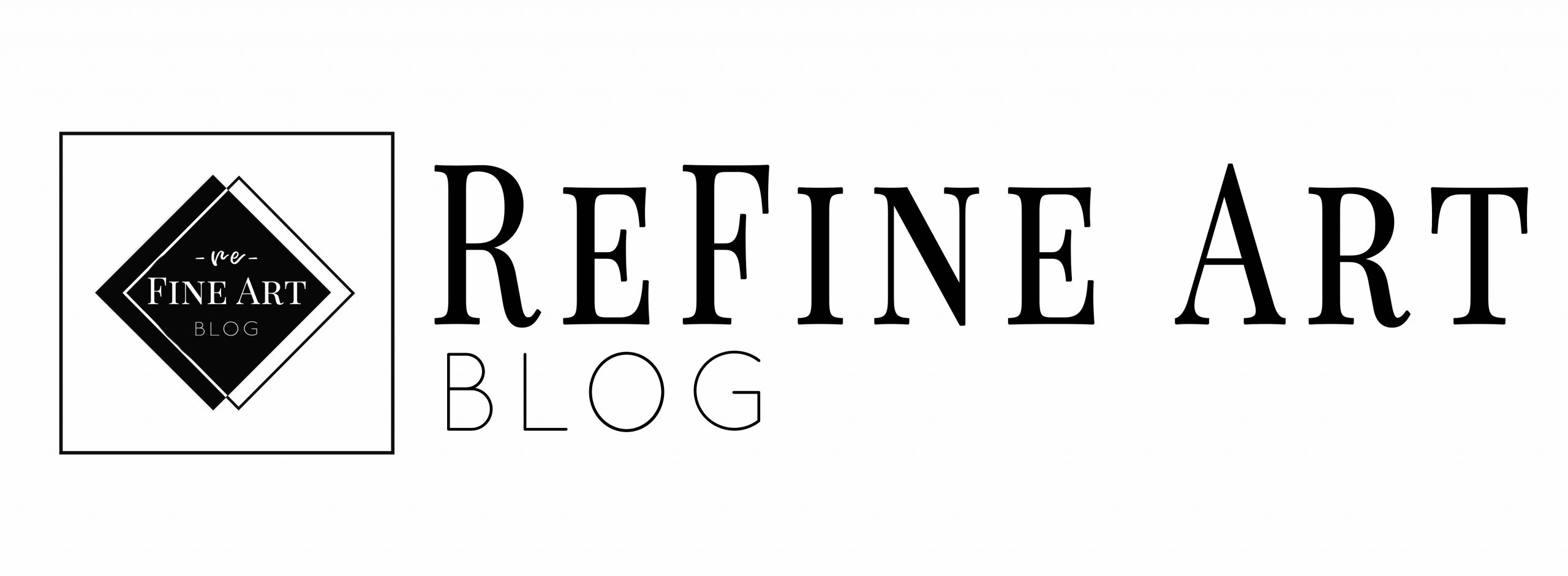

1 comment
A lady holds power, dignity and strength to rule this world. On this season of International Women’s day, why not grace your house or office with a beautiful lady painting? At IndianArtZone, we paint with a vision. The experts at their portal can advise you on which paintings would fit your place well. Visit IndianArtZone to know more about their collections.